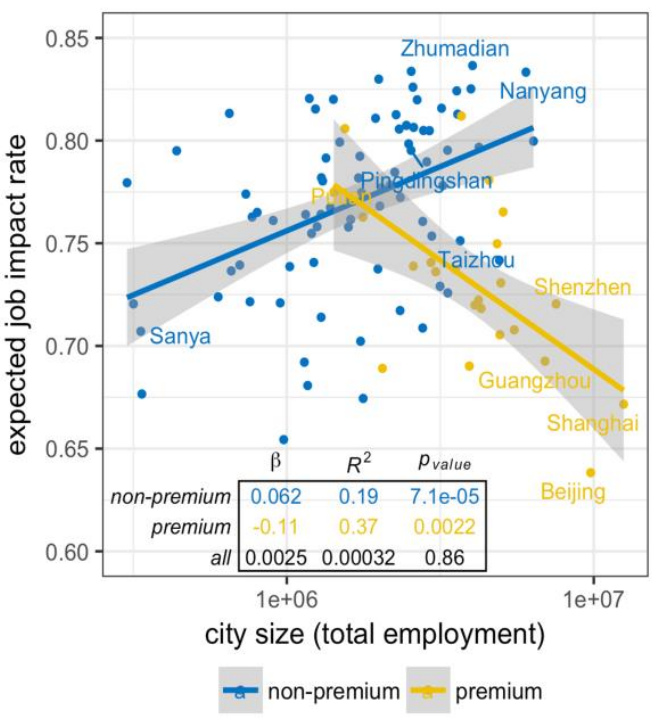Automation impacts on China’s polarized job market.
Published at
Journal of Computational Social Science
2021

Abstract
When facing automation threats, a large Chinese city worker might not be as lucky as a worker in a large US city. Empirical studies found that large US cities exhibit resilience to automation impacts because of the increased occupational and skill specialization. However, in this study, we observe polarized responses in large Chinese cities to automation impacts. The polarization might be attributed to the elaborate master planning of the central government. Cities are assigned with different industrial goals to achieve globally optimal economic success and a fast-growing economy. By dividing Chinese cities into two groups based on their administrative levels and premium resources allocated by the central government, we find that Chinese cities follow two distinct industrial development trajectories: one trajectory involves government support leading to a diversified industrial structure and, thus, a diversified job market, and in the other trajectory an absence of government support leads to specialty cities and, therefore, a specialized job market. By estimating the impact of automation on a polarized job market, we observe a Simpson's paradox: overall, there is not a statistically significant relationship between city size and resilience to automation, but when we disaggregate by the level of job diversity, we find larger cities with a diversified job market exhibit greater resilience, while larger cities with specialized job markets are more susceptible. These findings inform policymakers to deploy appropriate policies to mitigate polarized automation impacts.